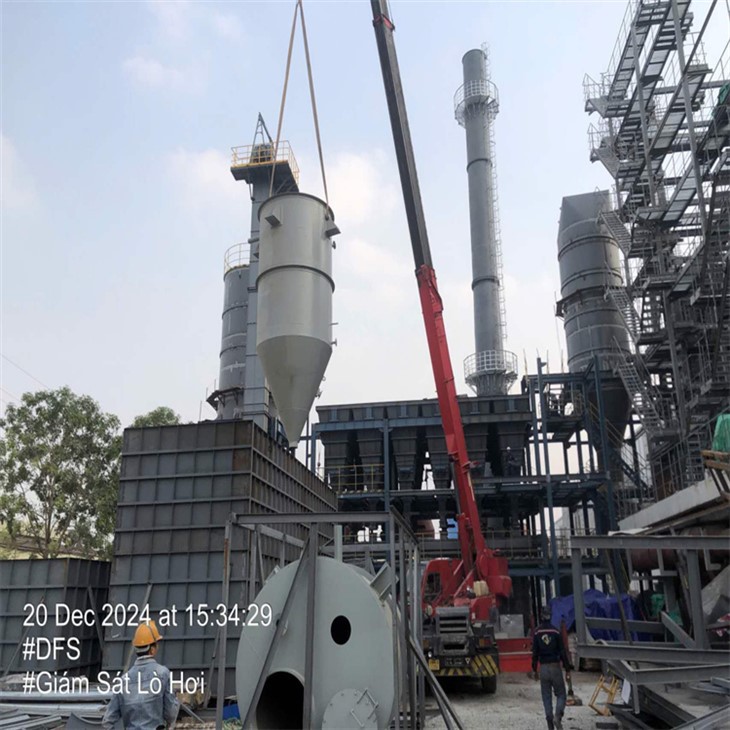Waste to energy plants use municipal solid waste, also known as garbage or trash to generate steam. The steam is then used to power a generator turbine. MSW is made up of a variety of materials that are energy-rich, such as plastics, paper, yard waste and wood products.
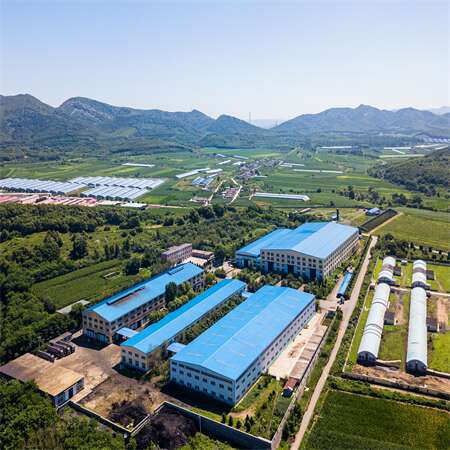
why choose Us ?
Tenor Low Carbon New Energy Technology Co., Ltd. developed a small waste incineration systems with the research team at Dalian University of Technology. WTE incineration systems include a hopper and feeding machine as well as stoker, step grates, ash hoppers, slag removal systems, transport aircraft, combustion chambers, and slag hoppers.
Products Description
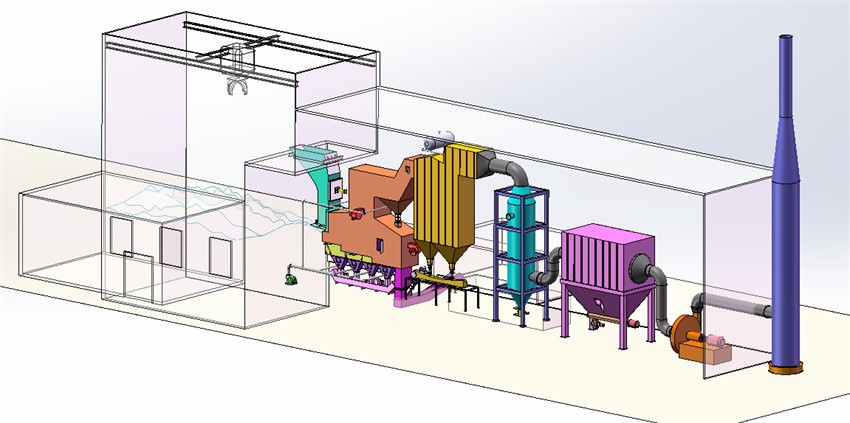
The construction and development of municipal solid waste incineration plants are of great significance to deal with urban waste disposal problems. They can not only effectively reduce the amount of garbage, but also reuse resources through power generation and other methods, and also help improve the ecological environment quality of the city. However, the construction and operation of waste incineration plants also need to take into account environmental standards to ensure the harmlessness of emissions, and take corresponding measures to reduce possible air pollution.
Products Parameters

Main equipment
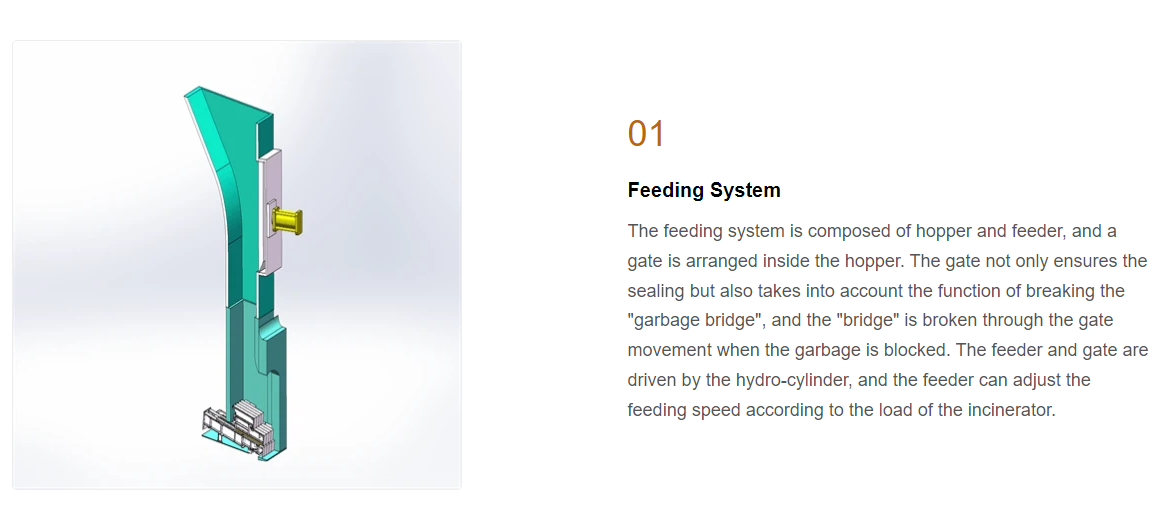
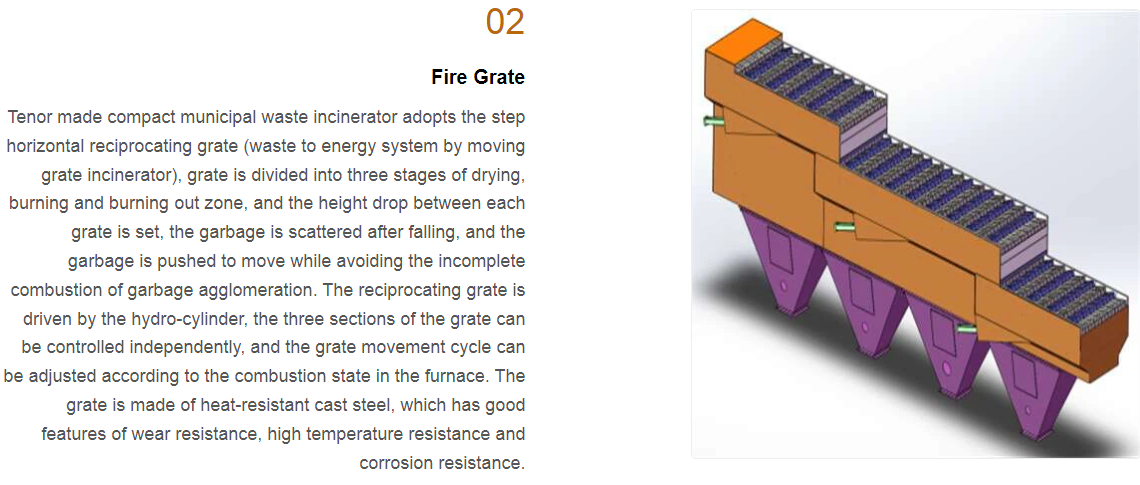
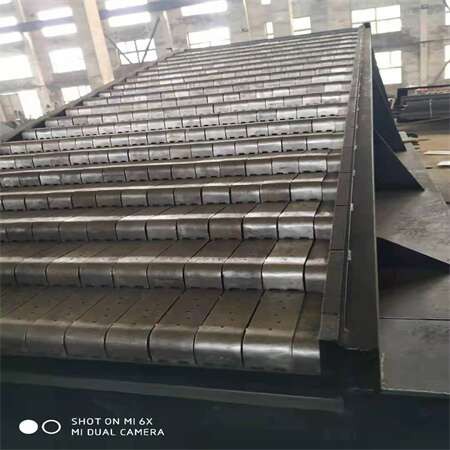
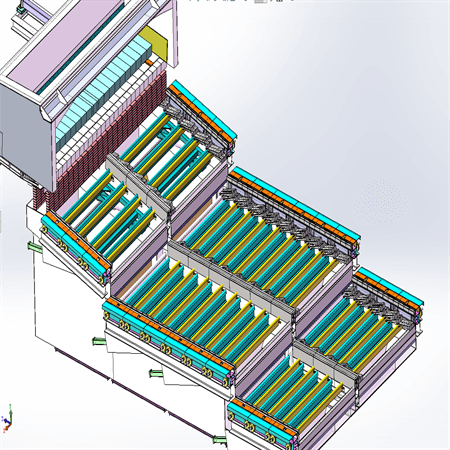
Grate advantages:
High efficiency stable combustion:
The garbage is fully burned, the thermal ignition reduction rate is low,Equipment performance: The grate has good wear resistance, high temperature resistance and corrosion resistance, low damage rate, low replacement frequency and low maintenance cost.The pores and gaps are matched with air inlet, and the overall air inlet effect is more uniform, which is conducive to uniform combustion and stable combustion.
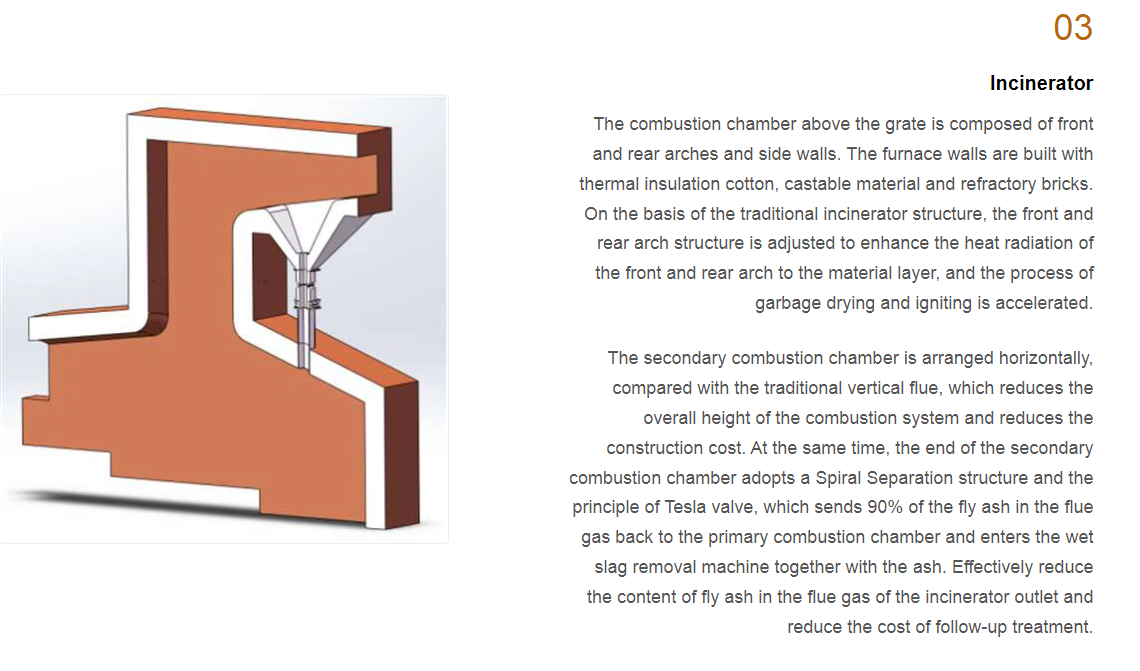
Solid waste incinerator process flow
Following the garbage in the furnace, the three sections: burning, drying and burning out are carried out with certain temperature and pressure. Following the trash into the furnace, the three sections are: burning, drying and burning off, under a pressure and temperature.
The ash from the combustion of garbage is pumped into the wet-slagging machine via the slagging bucket, and the remainder goes to the slag pit. The horizontal conveyor for ash leakage is attached under the air-chamber, and small amounts of slag and ash under the grates are then sent to the machine that removes wet slag.
The combustion flue gas enters through the throat into the second combustion chamber. Secondary air is then added in the throat for the purpose of adjusting the furnace's temperature, ensuring complete combustion, and controlling the production of nitrogen dioxides.
It is possible to choose between hot water, steam, or electricity production according to project size and cost benefits. Deacidification of the flue gas is done after it has been cooled by heat transfer.
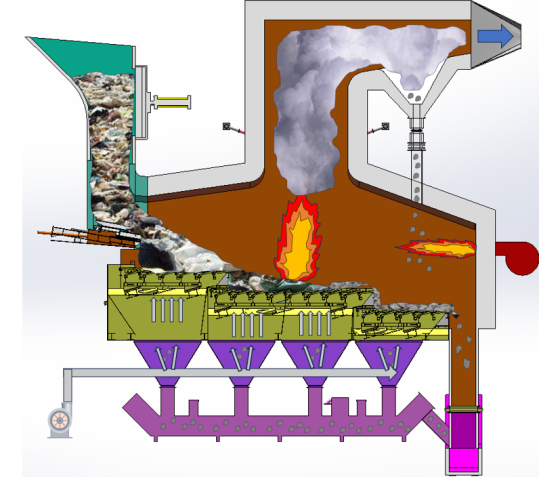
Process charateristics
- Easy installation, simple structure;
- Automate all equipment; reduce the workload of furnace personnel
- Construction costs are low and the total height of buildings is small.
- Secondary combustion chambers adopt a spiral dust-removal structure with a Tesla valve in order to reduce fly ash contents, lower the cost of dust removal, and increase the life expectancy.
- Heat burn is reduced by less than 5 %.
- Emissions of pollutants meet standard.
- Turn-key turnkey WTE and customized complete proposals.
Waste to energy project display
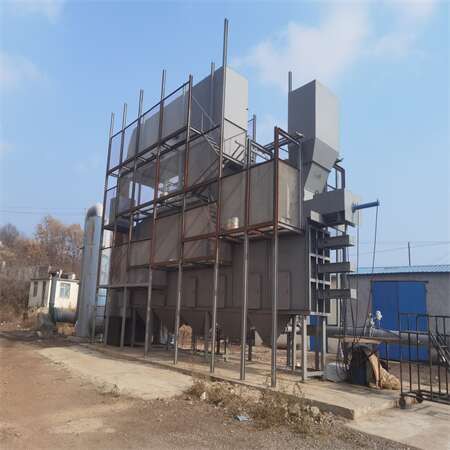
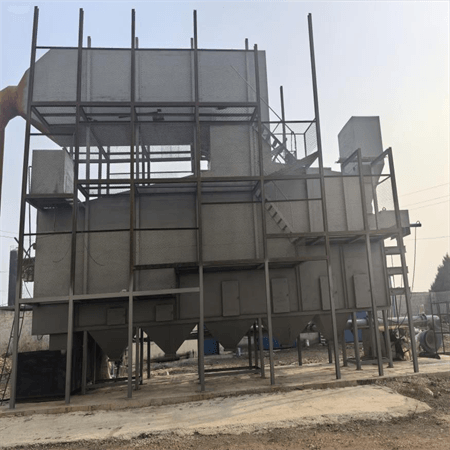
garbage incinerator 50 tons/d
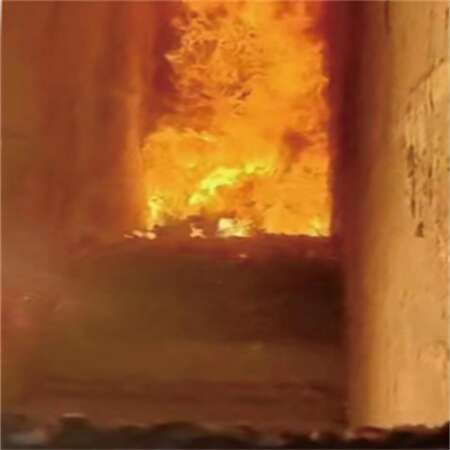
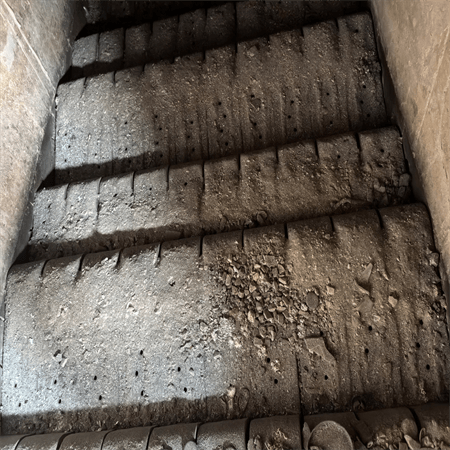
Benefite of Waste Management
MSW incinerator can produce steam, hot water and electricity generation, sustainable Power from Small-Scale Waste Incineration.
Application:Township, cities and towns, government, power plant.
why choose Municipal Waste Incinerator?
The decision to build and run a Municipal Waste Incinerator is often made based on a number of factors. These include waste management requirements, environmental regulations and economic considerations. Here are a few reasons why a city or region may choose to install an MWI.
- Volume reduction: Incineration reduces waste volume by converting it to ash, which takes up less room. This can increase the life of landfills already in place and reduce the need to build new ones.
- Energy Recovery : MWIs are designed to recover thermal energy generated during combustion and use it to produce electricity or district heating. The facility can become more sustainable as it converts waste into useful energy.
- Compliance with Environmental Regulations With the right emission control technology in place, MWIs are able to meet strict environmental regulations. They can reduce pollutants and greenhouse gases compared to uncontrolled landfilling or open burning.
- Pollutant and Pathogen Destruction High-temperature combustion destroys organic pollutants and pathogens, making it an effective method for disposing of certain types of waste.
- Climate Concerns In regions where landfill gas emission regulations are strict, MWIs may be an effective way to reduce methane emissions.
- Flexibility MWIs are able to handle a wide range of waste streams including mixed and non-recyclable waste. This flexibility allows for flexible waste management strategies.
- Land Availability : In areas with limited land available, incineration is a more space-saving option than landfilling.
- Economic benefits The sale of electricity produced from waste incineration could provide revenue to the facility as well as the local economy.
- Diversification of Waste: Incineration can be used to process a variety of waste types. This is beneficial for areas that have a diverse waste stream.
- Public health: MWIs that are properly operated can improve public hygiene by reducing wastes which could attract vermin and pests.
- Incineration does have its environmental and health risks. Incineration can cause air pollution, ash residues that are potentially harmful and contribute to carbon dioxide emissions. The decision to build a MWI must be taken after careful consideration of the possible impacts, in accordance with comprehensive waste management plans that prioritize reduction, reuse and recycling, as well as energy recovery. Public participation and transparency are also crucial for ensuring social acceptance and compliance to environmental justice principles.





